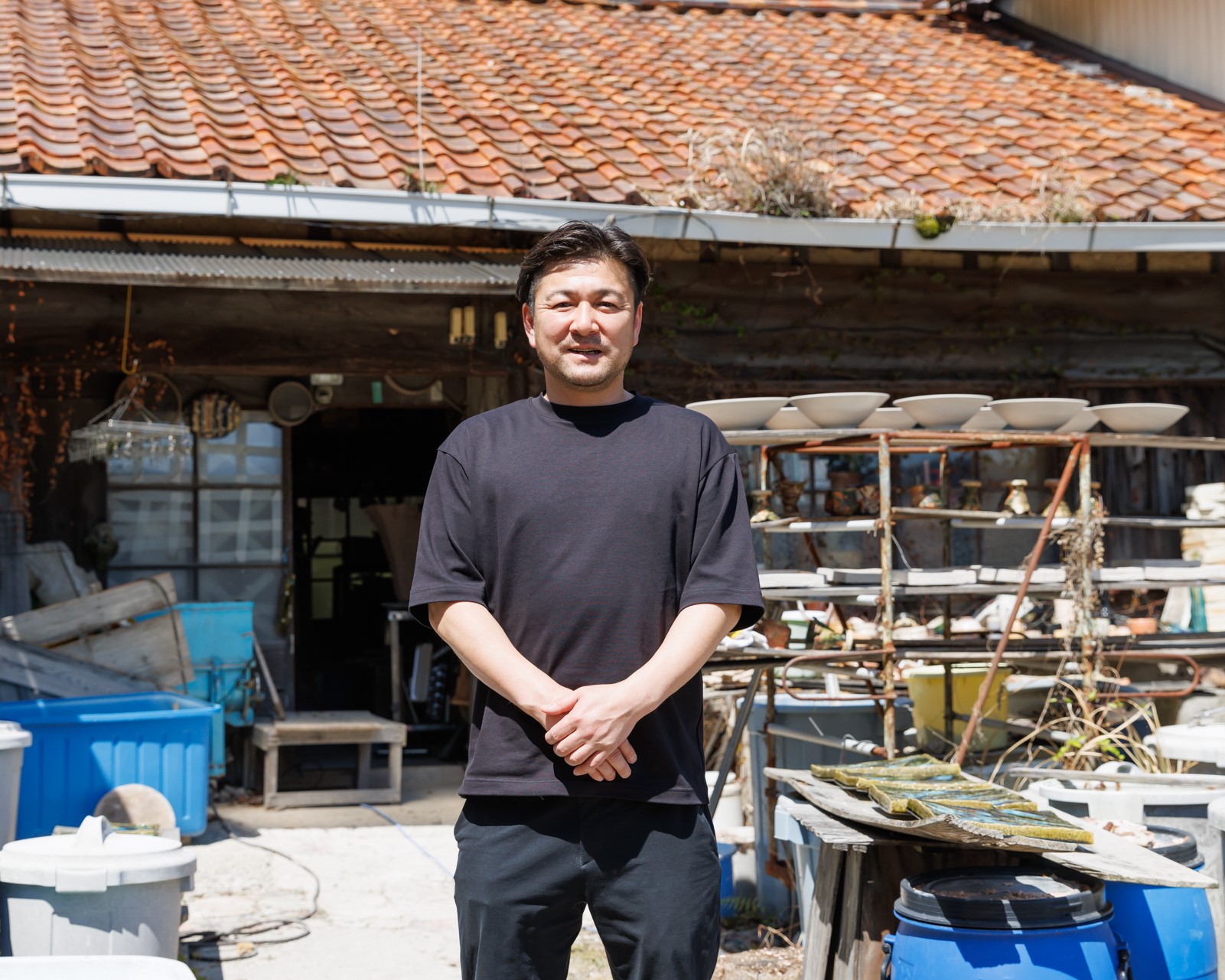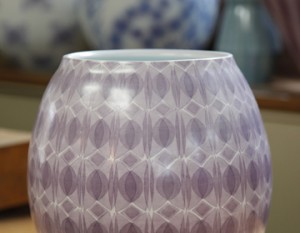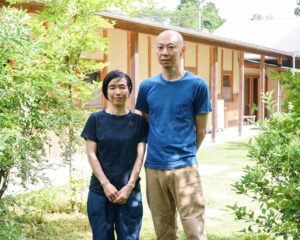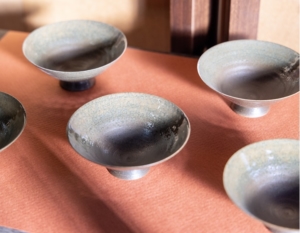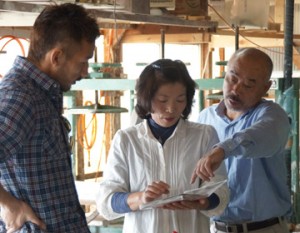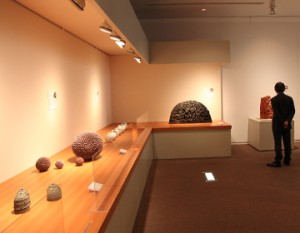Ceramic artist Masato Yamaguchi of Seto City, Aichi Prefecture, is gaining popularity for his Rimpa Oribe, a unique technique that incorporates traditional Japanese designs into his work. Rimpa-Oribe is a new expression that combines the bold and flamboyant “Rimpa” and the vivid “Oribe-yaki.
Seto City, a town that has lived with pottery for 1,000 years
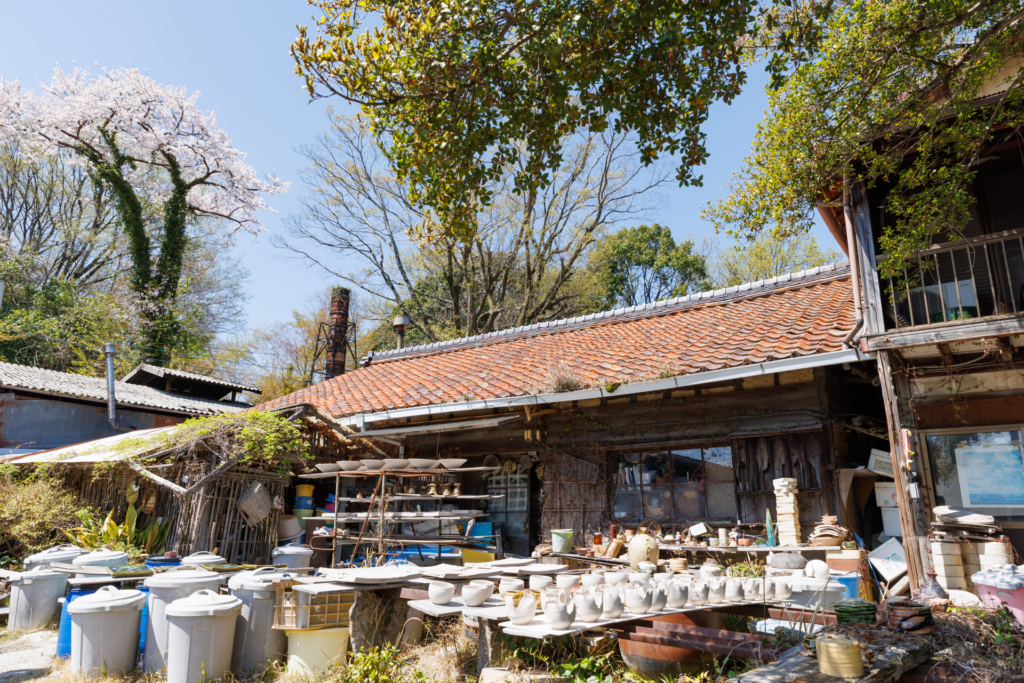
Seto City is located in the northeastern part of Owari, Aichi Prefecture. Seto ware, one of the six oldest kilns in Japan, is said to have a history of more than 1,000 years. The clay from Seto contains almost no iron and does not turn red when fired. The beautiful white glaze allows for a wide range of expression, such as vivid painting using various glazes, engraving patterns on the pottery itself, and reproducing complex patterns by transfer. In addition to the freedom of design, a wide range of ceramics came to be fired because of their high resistance to light and fire. In this way, Seto ware spread throughout Japan.
In the peaceful forests of Seto City, the home of pottery, lies the workshop of Mr. Masato Yamaguchi.
Rimpa Oribe” expressing Yamaguchi’s unique world view
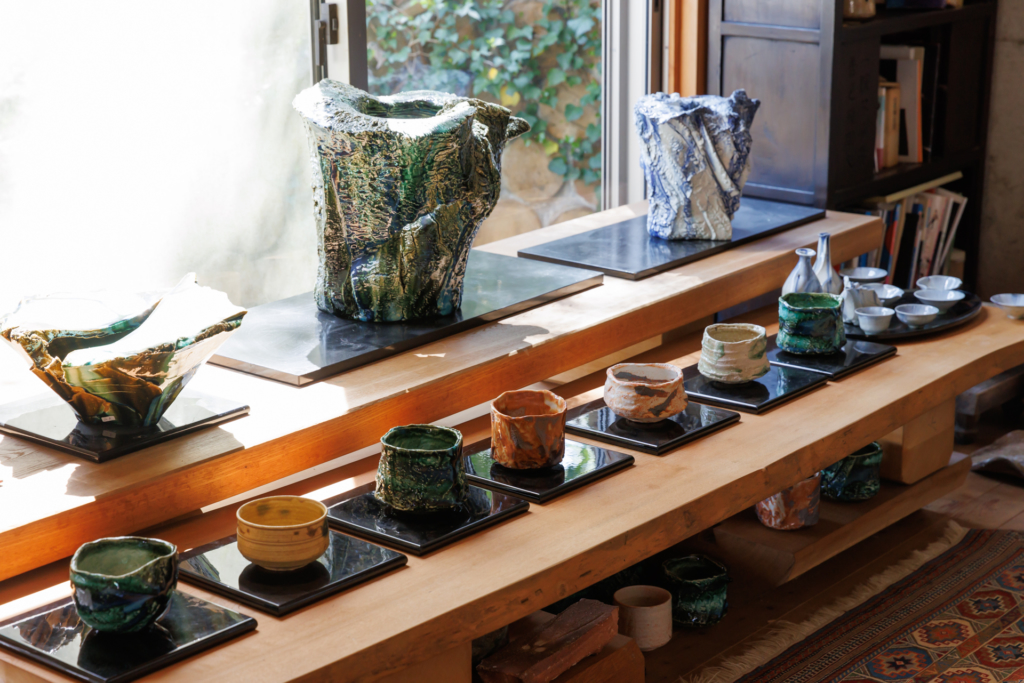
Oribe ware with a bright green glaze is produced at this studio. Rimpa Oribe,” one of his representative works, is a combination of “Rimpa” and “Oribe-yaki,” which flourished in the late Momoyama period with its bold, grand, and flamboyant style using gold and silver. Of course, the name “Rimpa-Oribe” was also coined by Mr. Yamaguchi.
Mr. Yamaguchi says that he has always loved to draw pictures. In order to express his individuality in Oribe ware, he decided to “do something that no one else does” and “create a piece that incorporates patterns from
Japanese history,” and through repeated production, he arrived at his current style.
I thought about becoming an architect, but… I decided to pursue ceramics.
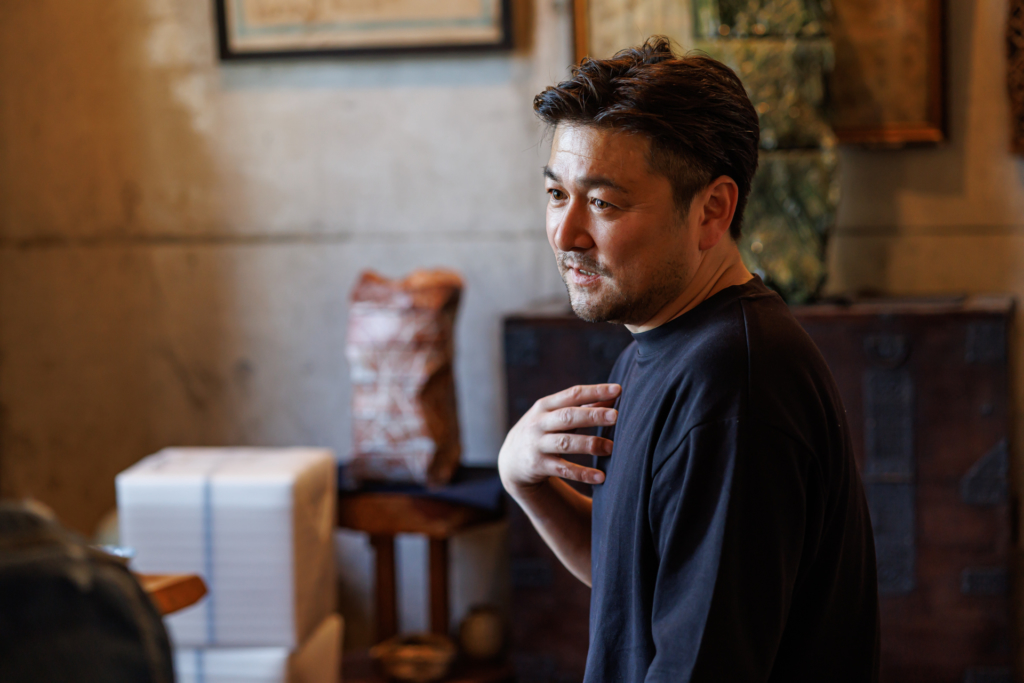
Mr. Yamaguchi’s father was also a potter from Seto City. However, Mr. Yamaguchi was not a potter, but was trying to become an architect. I went to architecture school because I liked Tadao Ando, but I failed there and decided that this was not the path for me. I made up my mind and decided to do ceramics when I graduated,” said Yamaguchi. However, his first apprenticeship was neither at a pottery school nor at his parents’ home, but at a pottery called “Kasumisen Toen,” also in Seto City. At Kasumisen Toen, he learned pottery making techniques, and after four years, he became independent. He says that he chose to work at a kiln that was not his family’s because of his father’s teachings. I guess he taught me to eat other people’s food first,” he said.
His father taught him something else, too. He told me to study clay and glaze (glaze) because anyone can make pottery on a potter’s wheel,” says Yamaguchi, giving us a glimpse into the foundation of his obsession.
Clay and ash that define Yamaguchi’s work
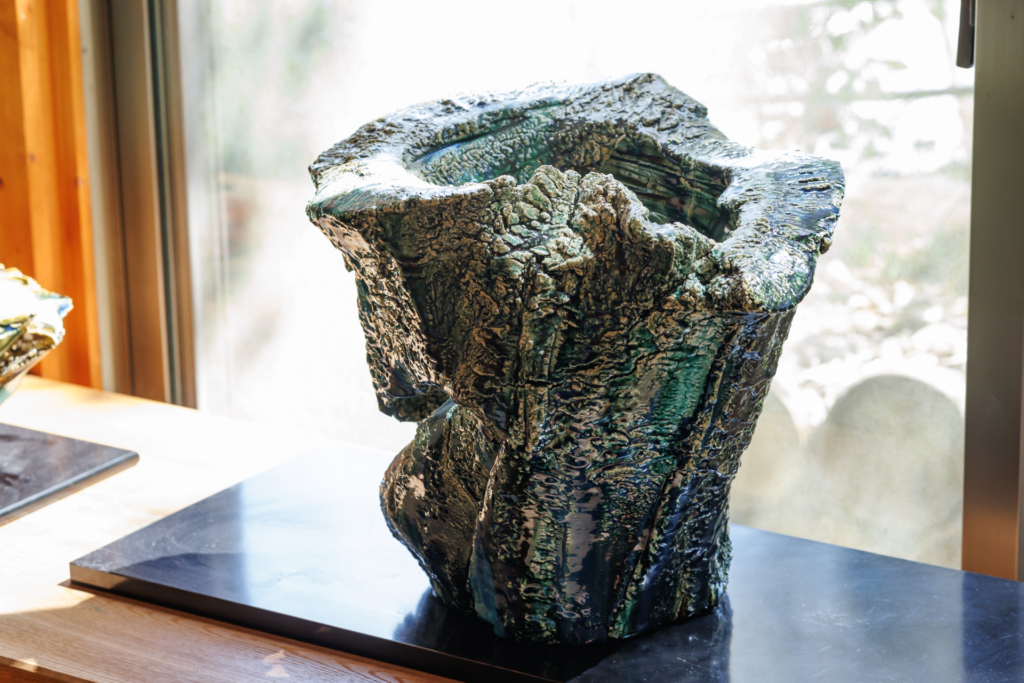
Yamaguchi says that most of his works are flower vases and tea utensils. He uses a mixture of clay used in Mino ware, which flourishes in Gifu Prefecture, and clay from Seto, and does not use stones, which are the source of porcelain. The Mino clay contains a lot of silicic acid, which increases the luster of the glaze. On the other hand, Seto clay has a matte finish. Yamaguchi uses 70% Mino clay as a base, and adjusts the clay mixture according to the piece.
Mr. Yamaguchi is also particular about the ashes that form the basis of his glazes. The choice of ash is an essential element for expressing the unique color and roughness of the glaze. Even if the original trees are 10 meters apart, the composition of the ash can be different. Ash is extremely delicate. That’s why it’s so interesting,” says Yamaguchi.
Intuition” that generates boldness
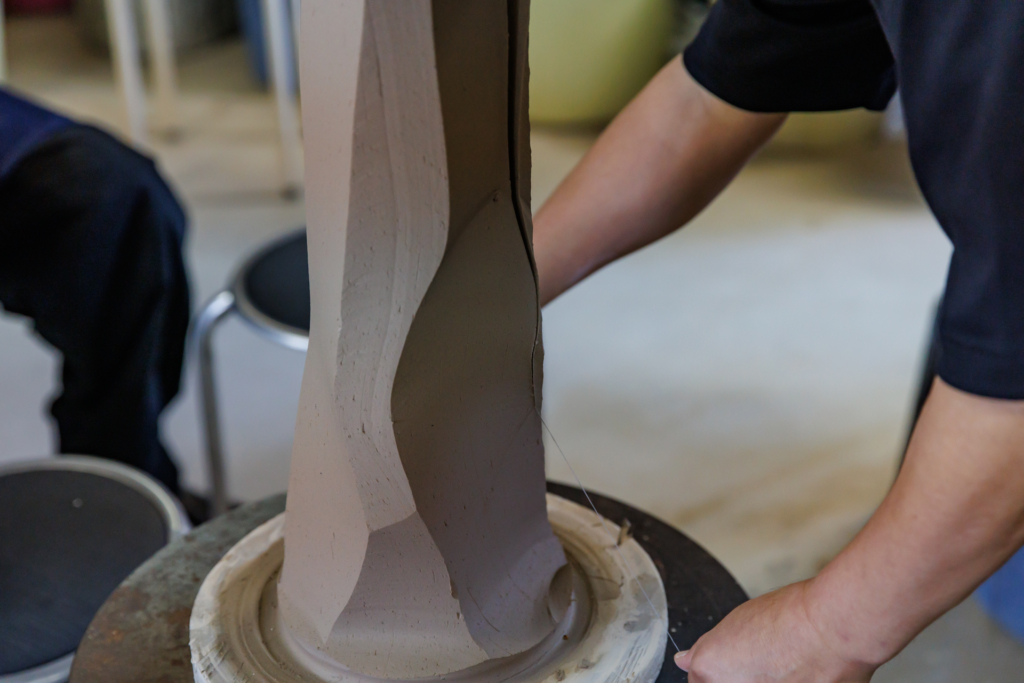
We were shown the production process of a flower vase. The bold undulations often seen in Mr. Yamaguchi’s work were created by roughly dropping the clay with a piano wire. Mr. Yamaguchi said, “If it is straight, it is boring. I don’t like to think too much, so I just go with my instincts,” he said as he chipped away at the clay. In the studio, there are many other tools for creating works, such as a large spatula and a planer.
Once the shape is determined to a certain extent, the next step is to sprinkle the surface with clay powder. This process is said to give the surface a rough texture.
Coolness that leaves no trace of human touch.

Yamaguchi also tears off a large piece of clay from the base of the vase to create a large movement, and then he directly scorches the area with a burner. Yamaguchi says that burning with a burner gives the vase a natural cracking effect. It doesn’t feel like it has been torn off,” he says, “and it looks more natural, like the ground has cracked. It’s cooler if it doesn’t look like it was touched by a human being,” he says.
According to Mr. Yamaguchi, it is difficult to make mouths for vases and other items. This is because he often works by hand instead of using tools. He laughs, “It’s the way a person touches it that comes out the best.
Oribe Furuta, the creator of Oribe ware, and Mr. Yamaguchi have something in common.
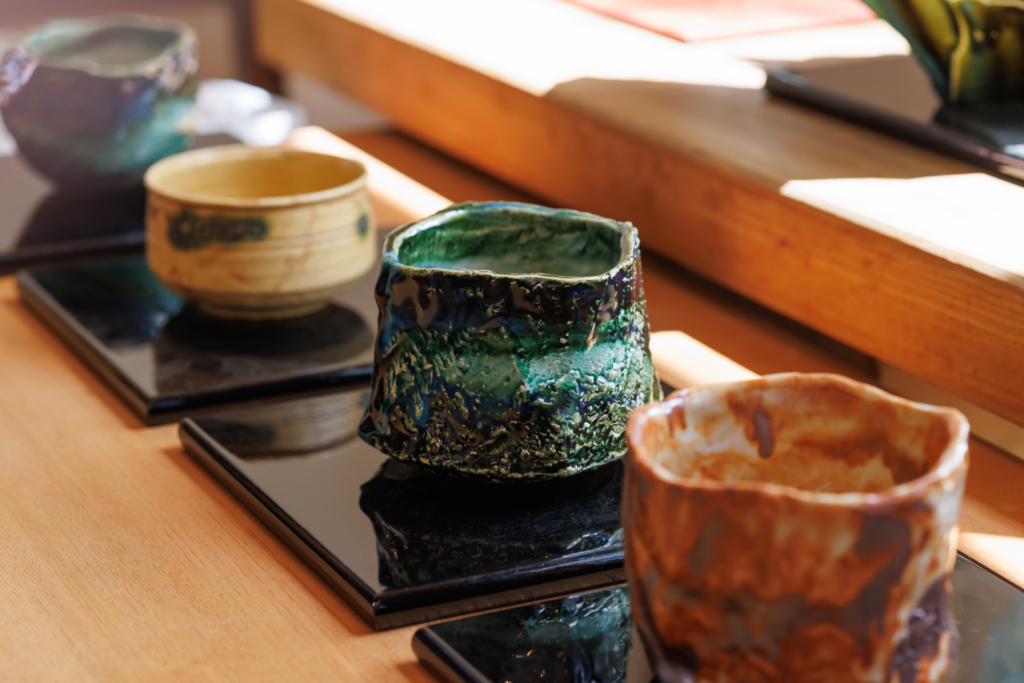
Oribe ware is said to have been named after Furuta Oribe, a famous warlord and tea master from the Warring States period to the Edo period, who favored it. The vivid colors of Oribe ware seem to be the opposite of what is called “wabi and sabi,” but it is said that Furuta Oribe, the founder of Oribe ware, was taught by his master, Sen no Rikyu, to “do something different from others,” and that he liked flashy and new things. Oribe was also said to have liked to make things that were new and fancy.
Perhaps there are similarities between Mr. Yamaguchi and Oribe Furuta, who established Rimpa Oribe by deciding to do what no one else was doing.
Enhancing the value of “craft as art.”
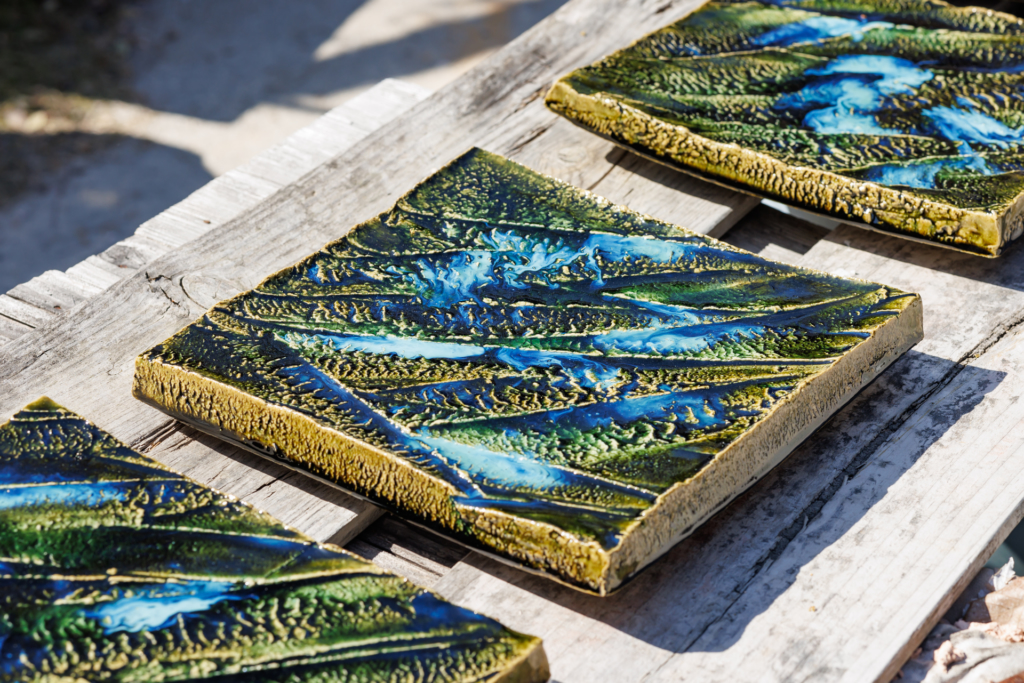
Yamaguchi is currently holding solo exhibitions at department stores and galleries in Japan. In addition to Oribe ware, his “Ofukaiyaki” series, which is arranged in an eye-catching bright blue color, is also gaining popularity. I am happy to see my creations being evaluated and moving up to the next stage,” says Yamaguchi, who says his next goal is to reach the world stage. I would like to improve my techniques for making large pieces,” Yamaguchi said with a twinkle in his eye, “and I would like to somehow pave the way for craftwork as an art form.
Born in Seto, a city with a history of 1,000 years, Mr. Yamaguchi is a cloud in the world of ceramic art. We cannot take our eyes off the new world view that Mr. Yamaguchi is creating.



